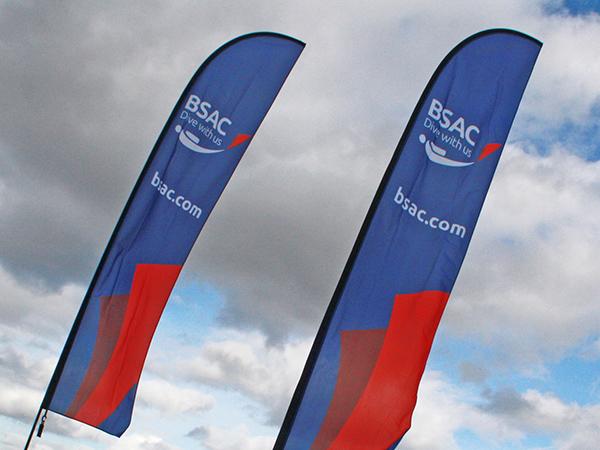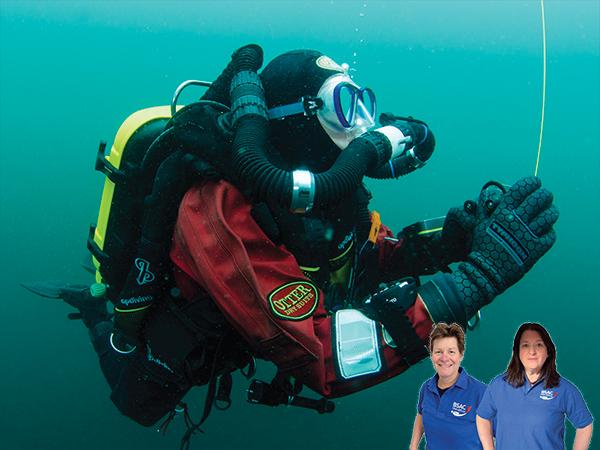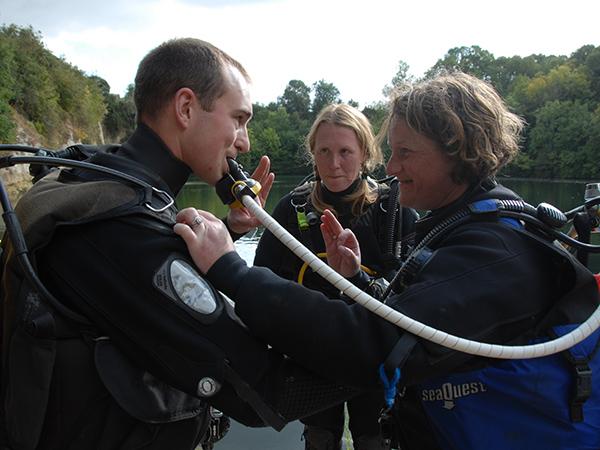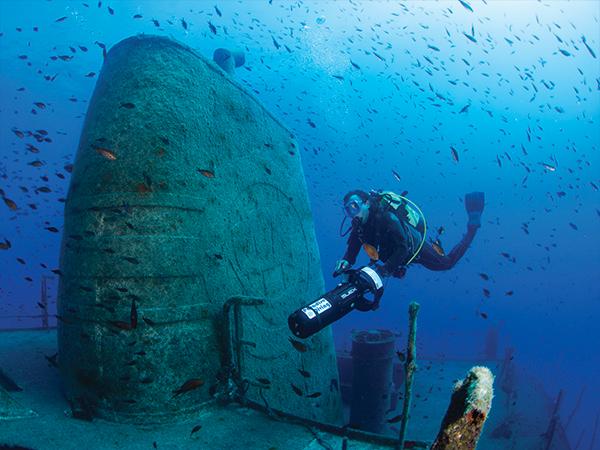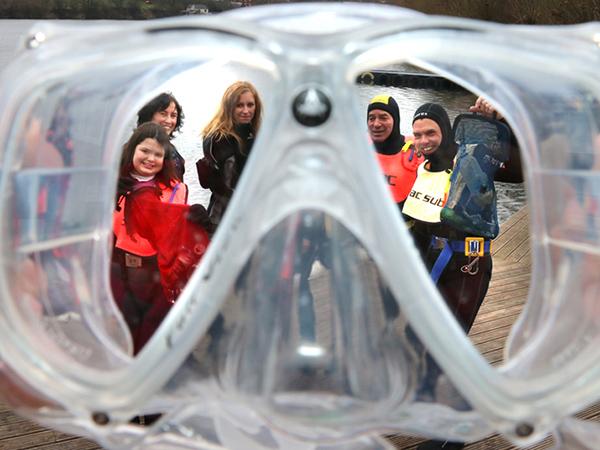BSAC HQ
BSAC HQ may be consulted by the branch/centre, or individual members, at the outset when disciplinary procedures take place. HQ advice should not be taken as supporting one side or another in any dispute.
Suspension of branch membership
Try wherever possible to avoid suspending members if lesser measures could achieve the necessary protection. (e.g. remove from instructing / managing dives for a temporary period).
When the evidence indicates that a serious breach of the Code of Conduct has occurred, the branch may elect to temporarily suspend branch membership pending a disciplinary review. This suspension may include the member no longer being permitted to take part in any branch activities, diving or otherwise, until the suspension is ended.
Any suspension should not be interpreted as an indication of guilt or any adverse reflection on the member, it is merely a precautionary measure to prevent any recurrence, interfering or destruction of evidence, or a situation escalating.
Procedures
The procedure to be followed in dealing with incidents or complaints against members for breaches of the Code of Conduct will be guided to an extent by the level and frequency of such breaches. However, all such incidents shall as a minimum be based on evidence and be conducted in a fair, open and transparent process and be documented.
Evidence
Evidence may be in many formats ranging from reports from a Dive Manager on a diving trip, persons witnessing the behaviour, copies of correspondence (eg emails or printouts from a Facebook page) or from formal interviews conducted by branch officers delegated to conduct an investigation.
Wherever possible any evidence should be agreed with the individual concerned. Where two parties involved give different versions of events, that does not imply that the circumstances did not occur.
Meetings
Any formal meeting held to discuss the circumstances of an incident shall be documented and this documentation safely secured and made available to properly authorised persons.
The committee should discuss the complaint and;
- Where the matter is straightforward, it may be appropriate for the committee to hold a disciplinary hearing where witnesses may be called and questioned by both the committee and anyone facing a disciplinary hearing.
- Where it is more complex, the committee may feel that it would be beneficial to appoint an investigation officer to gather evidence and interview key people and the person(s) alleged to have been at fault.
- The investigating officer, should act impartially and deal with the evidence and facts. They should report to the committee on their findings and will present the case to the committee at a disciplinary hearing if necessary.
Disciplinary options
A range of disciplinary options are available but the starting objective shall be to:
- Make clear what the inappropriate behaviour was and why it is not acceptable
- Make clear what the standard of expected behaviour is
- Explain what the individual needs to do to avoid any repeat of the incident(s)
- Explain as appropriate what level of support the branch/DO/Instructors will do to support amended behaviour
- Define if necessary any review periods
- Make clear the potential consequences of any failure to improve
- Explain the right of appeal if necessary
Actions could range through:
- A ‘quiet word’ and agreement to avoid a repeat
- An informal verbal warning
- An informal written warning
- A formal written warning
- A period of suspension followed by a monitored (and supported) return to activity
- Exclusion from the branch (see notes below)
- Escalation of the disciplinary process to BSAC
Exclusion
Careful consideration shall be taken of the implications of exclusion from a branch. Firstly it removes any potential to modify an individual’s behaviour once they are outside of the branch’s influence. It may simply transfer the problem elsewhere. It should be noted that broadcasting of exclusion to other branches in the area may represent a breach of an individual’s rights (including GDPR). As a consequence every effort should be made to retain members within the branch by helping them understand the implications of their actions and supporting them to modify their behaviour.
Where expulsion from the branch is considered likely BSAC strongly advises branches to discuss all options with BSAC in order to ensure correct procedures are followed and that the action of expulsion is appropriate and proportionate to the offence.
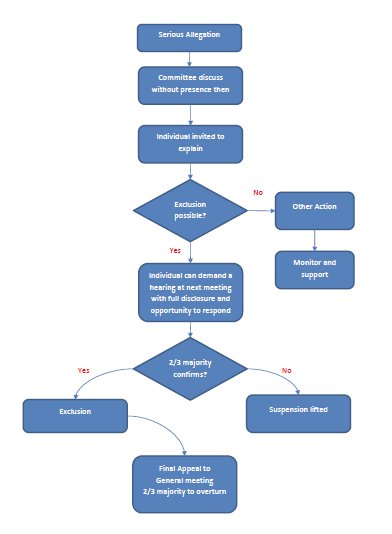
Figure 2. Process for serious allegations
See Support in next section
Right of appeal
Depending on the nature of any decision the right of appeal may be informal or formal. In response to a ‘quiet word’ from an officer of the club, the individual, may consider that the intervention may not have been warranted and so the matter should be directed to either the Diving Officer (for diving and safety matters) or the Chair (for everything else) as appropriate. (See Figure 2)
Action not involving Expulsion
Where a disciplinary matter has been dealt with either by a branch, or an individual officer, the right of appeal shall be as set out in the branch Bye-laws. This will normally be to a committee meeting convened for the specific purpose. A final right of appeal would be the next AGM for the branch. Where the full disciplinary appeals process has been properly followed BSAC Council will not normally have the authority to overturn any decision properly made. The exception to this is were the disciplinary action is one where the member is subject to disciplinary action resulting in exclusion from BSAC as removal of BSAC membership means they will be unable to be a member of a BSAC branch (Article 7. (C) (3) "Only members of BSAC shall be members of Branches of BSAC").
Expulsion from the Branch
Where disciplinary action has resulted in expulsion from a branch then the member will have the right to demand an SGM of the branch to appeal to the full membership. The membership will consist of members that were members at the time of the decision to expel, notwithstanding anyone who has since left. The vote should be by secret ballot and requires a 2/3 majority to confirm expulsion. The meeting should normally take place within 30 days and all members must be notified.

